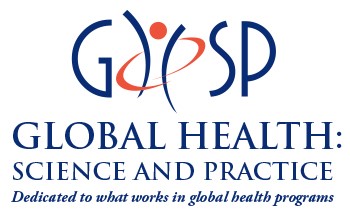Maternal, Newborn, and Child Health
- Global Research Priorities for Understanding and Improving Respectful Care for Newborns: A Modified Delphi Study
To inform the developing research field of respectful care, we identified global research questions that are specific to respectful newborn care. The top descriptive, implementation, and measurement questions focused primarily on defining, promoting, measuring, and advocating for respectful care.
- Implementation Approaches for Introducing and Overcoming Barriers to Hepatitis B Birth-Dose Vaccine in sub-Saharan Africa
We discuss determinants of hepatitis B birth-dose vaccine uptake in sub-Saharan Africa countries at the policy, facility, and community levels and propose solutions to known barriers of hepatitis B vaccine introduction in low- and middle-income countries.
- Health System Redesign to Shift to Hospital Delivery for Maternal and Newborn Survival: Feasibility Assessment in Kakamega County, Kenya
Service delivery redesign is needed to accelerate progress toward improved health outcomes. Kakamega County, Kenya, demonstrates that there is a strong base of health system assets that would serve as a starting point to successfully implement maternal and newborn health service delivery redesign.
- Household Survey Measurement of Newborn Postnatal Care: Coverage, Quality Gaps, and Internal Inconsistencies in Responses
Reliable measurement of postnatal content of care is currently lacking despite the critical importance of care in this vulnerable period. We found that there is a large quality-coverage gap with missed opportunities for quality care as well as internal inconsistencies in responses to newborn questions.
- Projecting the Impact of Nutrition Policy to Improve Child Stunting: A Case Study in Guatemala Using the Lives Saved Tool
We projected the impact of a Scaling Up Nutrition intervention policy, the Great Crusade, and found that increasing intervention coverage is unlikely to improve child stunting outcomes in Guatemala to meet Sustainable Development Goals by 2030.
- Participation in a Community-Based Women's Health Education Program and At-Risk Child Development in Rural Kenya: Developmental Screening Questionnaire Results Analysis
A community-based intervention focused on women's health education may help protect against early childhood developmental delays in resource-limited settings.
- Accuracy of Using Mid-Upper Arm Circumference to Detect Wasting Among Children Aged 6–59 Months in Nepal
When comparing the sensitivity and specificity of mid-upper arm circumference (MUAC) versus weight-for-height z-scores (WHZ) to identify wasting in children aged 6–59 months in Nepal, our findings suggest that only using MUAC compared to WHZ to screen may exclude a large number of children who could be at risk of severe or moderate acute malnutrition.
- Readiness to Provide Antenatal Corticosteroids for Threatened Preterm Birth in Public Health Facilities in Northern India
In settings with limited resources that lack standards to ensure the quality of childbirth and newborn care, the use of antenatal corticosteroids is potentially harmful. Safe, effective use of antenatal corticosteroids requires providing standardized evidence-based practices and supportive supervision, training staff, and a facility-level actionable health information system.

